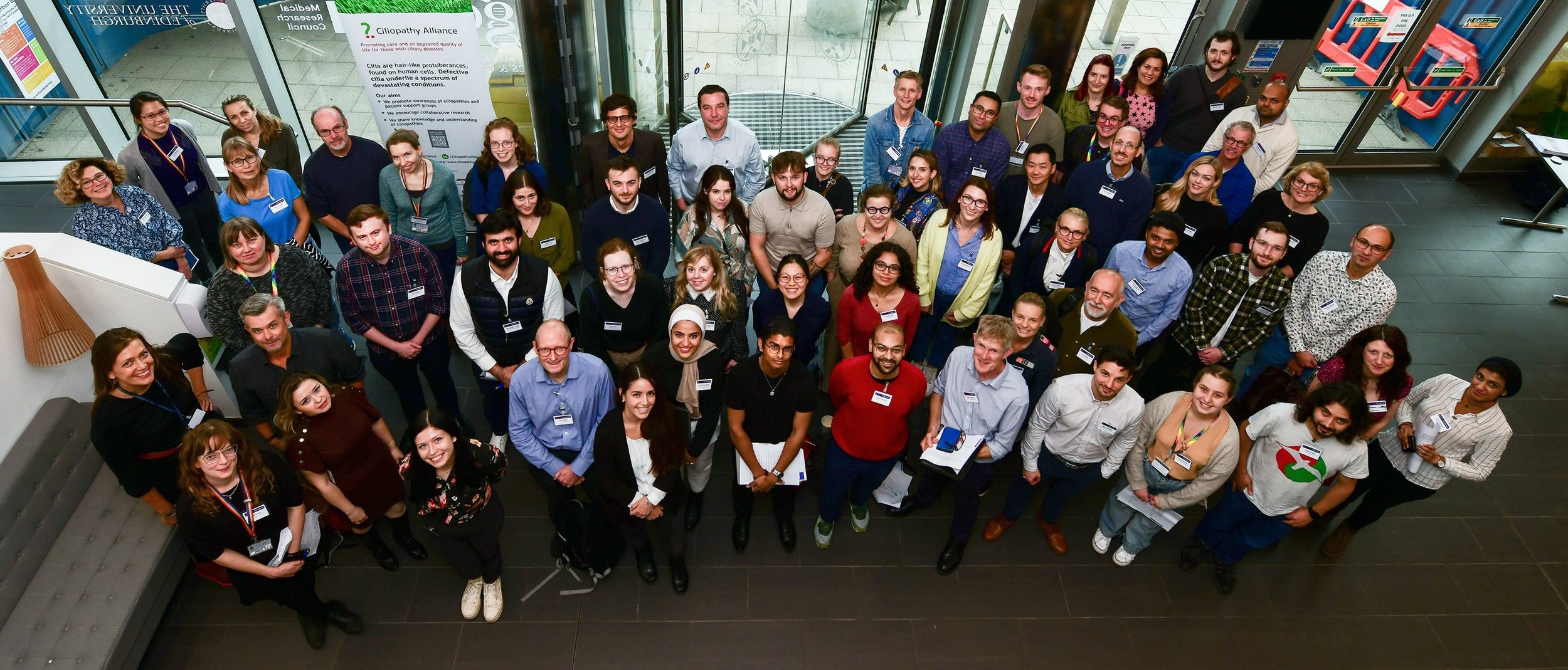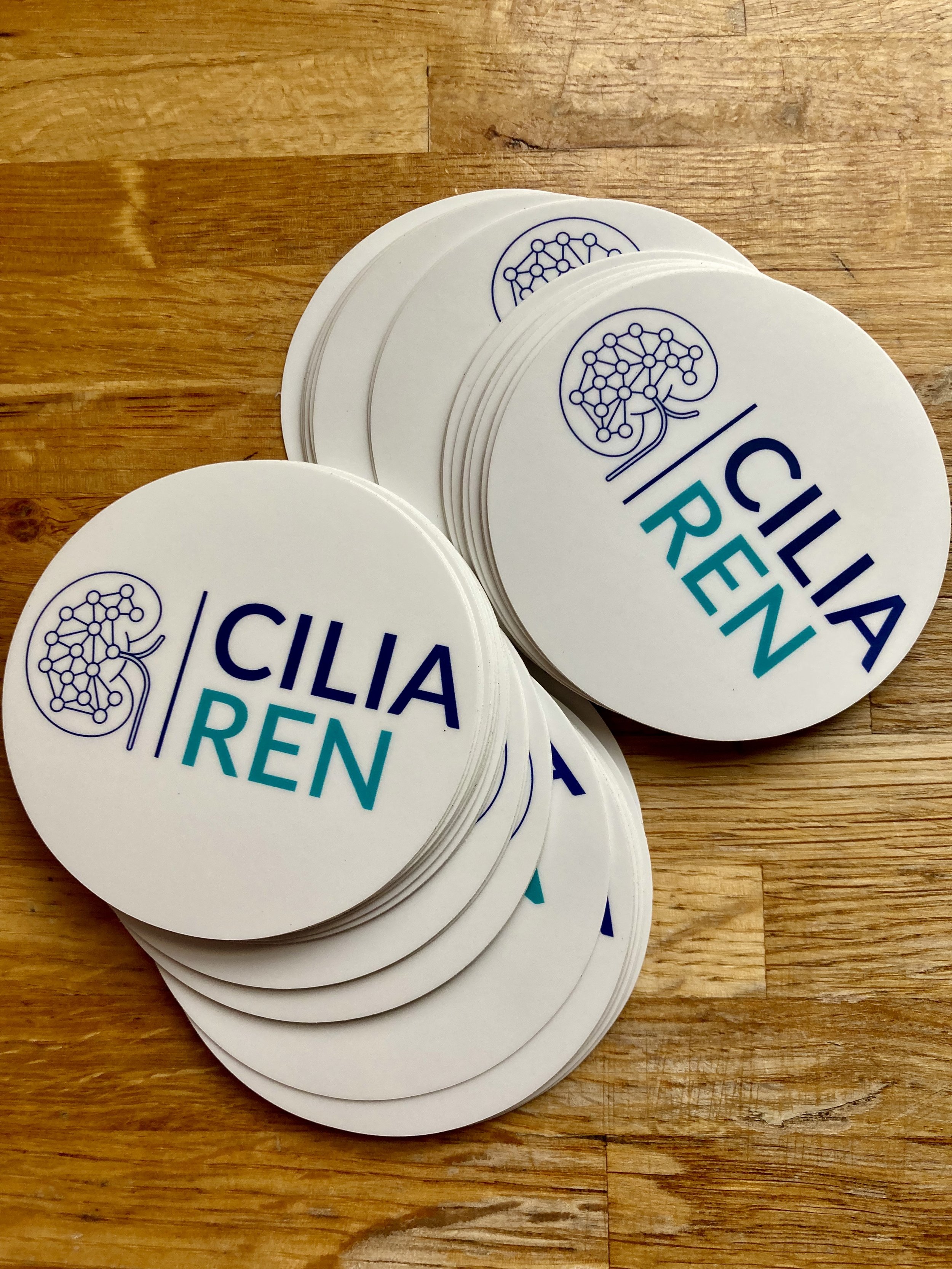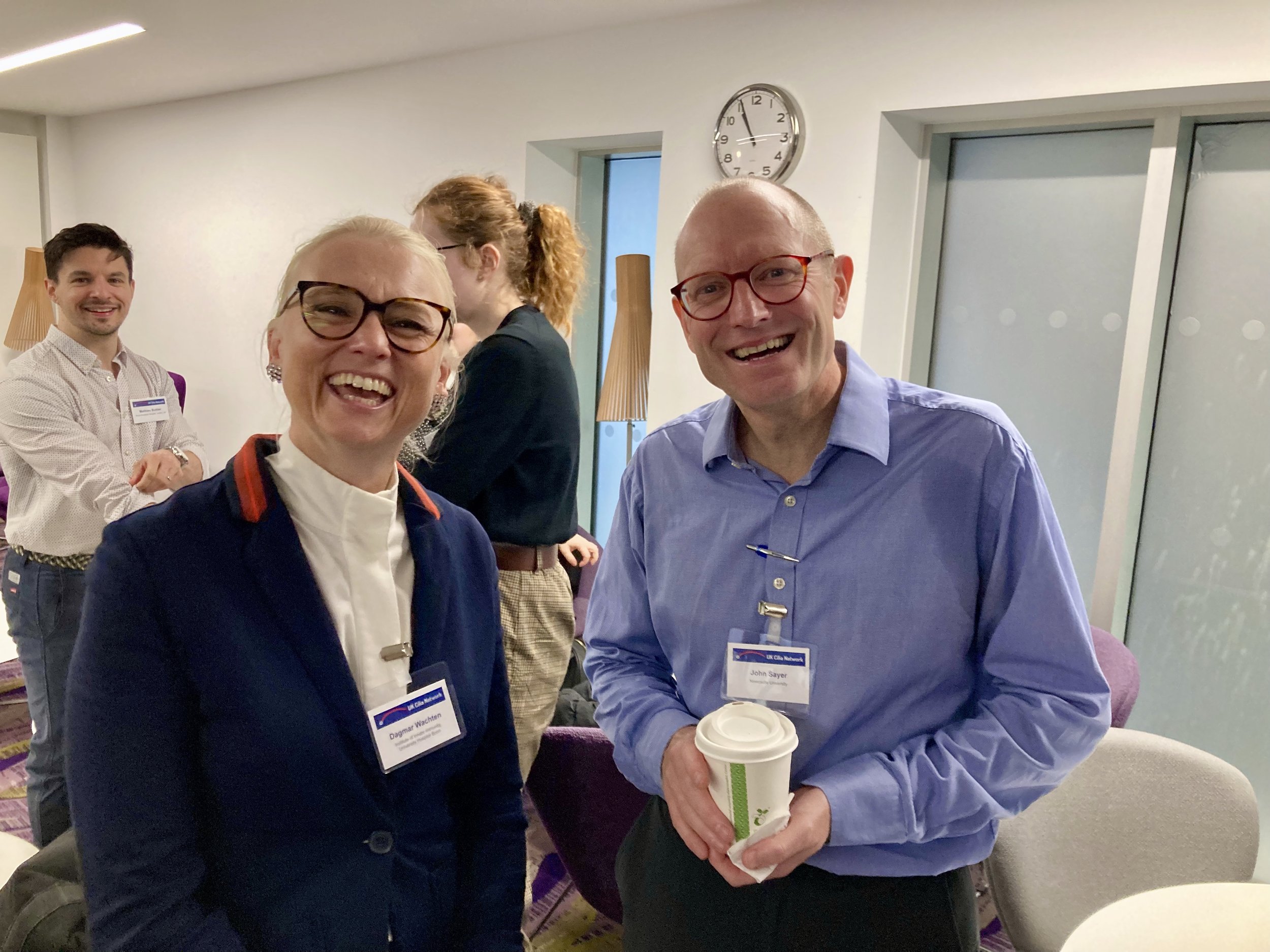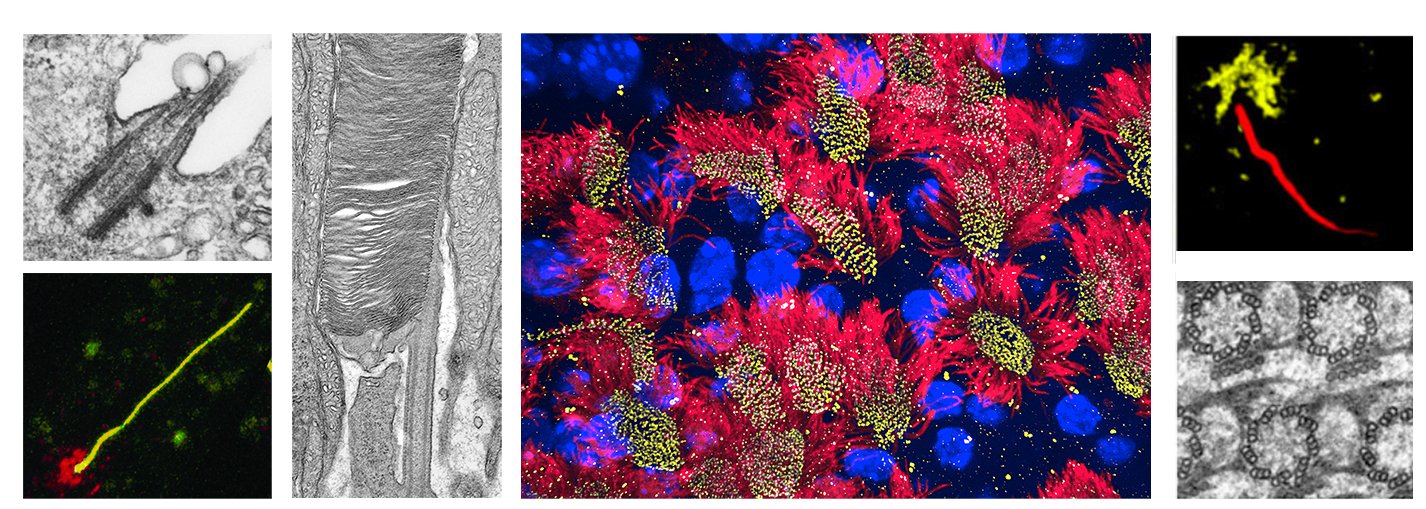We had our scientific launch of CILIAREN at the first in-person meeting since before the pandemic of the UK Cilia Network, where we welcomed 75 members and affiliates from around the UK as well as Denmark, Germany and Spain to share the latest in cilia science. The one-day meeting organised by Prof. Pleasantine Mill (University of Edinburgh) and Dr. Girish Mali (University of Oxford) at the Institute for Genetics and Cancer at the University of Edinburgh aimed to showcase the breadth of cilia research currently underway, as well as highlight the interdisciplinary nature of cilia research.
Found on the surface of almost everything mammalian cell type, primary cilia function as tiny cellular antennae detecting and amplifying extracellular signalling cues. Defects in the strWeure or function of cilia result in a growing group of rare genetic disorders, known as the ciliopathies. We learned from Daniel Baird (Larssen lab, University of Copenhagen) and Kateřina Apolínová (ZeClinics, Barcelona), about the role of primary cilia in congenital heart disease (CHD) and cardiac repair, using zebrafish as a model to identify potential therapeutic targets for ciliopathies.
We heard about technologies from Viviana Macarelli (Merckle lab, University of Cambridge) to monitor the dynamic content of primary cilium of human iPSC-derived hypothalamic neurons, which play important roles in controlling food intake and weight, to be able to interrogate cell-type specific ciliary signaling cascades involved in obesity. We had a keynote presentation from Prof. Dagmar Wachten (University of Bonn, DE), who engineers fantastic biosensors which can specifically detect specific signalling in primary cilia, demonstrating how the dysregulation of ciliary signalling triggers kidney cyst formation as well as metabolic and inflammatory remodelling of the adipocyte niche in Bardet-Biedl Syndrome (BBS).
Understanding how variants lead to syndromic disease like the ciliopathies requires better models than cells line on plastic. We heard from Dr. Kasia Szymanska (Johnson lab, University of Leeds) about diverse banks of patient-derived 3D mini kidney models to screen therapies for polycystic kidney disease (PKD). We also heard about the importance of microfluidics and kidney organ chips to be able to mimic flow to model PKD progression and therapeutic reversal from Beth Cutting (Knight lab, Queen Mary University of London). It was also the launch of CILIAREN by Prof. John Sayer (University of Newcastle), a joint MRC-NIHR funded UK Rare Disease Research Platform of clinical teams, research centres and patient groups around the UK aiming to improve the care and diagnosis of people with renal ciliopathies.
We were swept away by motile cilia too. We heard from Dr. Anu Sironen (Mitchison lab, UCL) about how profiling different motile cilia within the male reproductive system using spatial transcriptomics and structural differences within these cilia types. Dr. Francesco Boselli (Durham University) explained how mathematical models can help us understand this synchronized cilia beat can emerge over developmental time.
We were wowed by two outstanding artificial intelligence (AI) talks which promise to revolutionise biomedical research. The first used in clinical diagnostics for primary ciliary dyskinesia, Dr. Mathieu Bottier (Hogg lab, Royal Brompton Hospital) revealed how the platform can screen a patient sample in under 30 seconds, down from hours manually and be more definitive in subtle ultrastructure defect calls than the human experts. Next Analle Abuammar (Mennella lab, University of Cambridge) presented an automated segmentation strategy for generating a 3D model of multiciliated cells, with outstanding structural detail.
We had over 25 posters on exciting science from molecules to mechanism to medicines- the future of UK cilia science is bright! We also had a talk from Dr Roly Megaw representing the Ciliopathy Alliance and highlighting ways basic scientists can get involved with rare disease patient groups and involve ciliopathy patients in all aspects of their research. Then it was off to the pub for some much needed informal networking!







